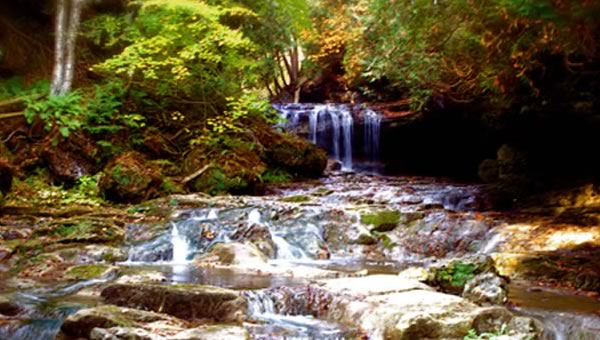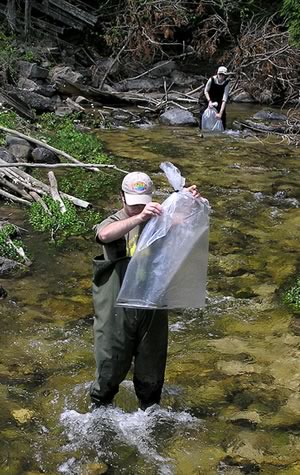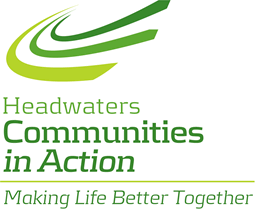Protecting the Headwaters

Are we taking care of our rural landscapes and environment?
We take its care very seriously. Headwaters is so named because it is the source of four major river systems. The Nottawasaga, Credit, Humber and Grand have all shaped our spectacularly beautiful landscapes. In our survey, 50% of respondents mentioned a physical characteristic of the Headwaters area as something they valued most about where they live. From its environmental significance, clean air and water, to its beautiful rural landscape – there is much we cherish about our region’s environment.
Hightlights
- As our community grows, we continually face the challenge of managing the environmental impact of our lifestyles.
- There has been an impressive decrease in the number and duration of smog advisories in Ontario and at monitoring stations close to the Headwaters since 2007.
- The majority of Headwaters drinking water sources comply with provincial standards. However elevated levels of sodium and chloride have been identified in several supply wells around Orangeville and Inglewood wells have shown issues with elevated levels of pathogens.
- What is needed to help us ensure we use our natural resources wisely while protecting our environment?
As a limited resource, water is a valuable source of natural capital and affects land values in the area. “The Credit River Watershed provides at least $371 million per year in ecological services to the residents of the watershed.”*
*Natural Credit: Fact Sheet, www.greeneconomics.ca, p.1.
Preserving our water
Water Preservation of water quality and quantity in Headwaters is critical to our own communities and those downstream. Groundwater is the source of drinking water for most communities in Headwaters with the exception of the most southern parts of Caledon that have water piped from Lake Ontario.
Walkerton, Ontario
The tainted water tragedy at Walkerton in 2000 highlighted the dangers of contaminated drinking water. Source Water Protection Plans are being developed by Source Water Protection Committees in collaboration with local conservation authorities, local municipalities and other community stakeholders. Their purpose is to eliminate or manage chemical and pathogenic threats to the water supply. Chemical threats come primarily from industrial and farm-related activity; pathogenic threats from human and animal waste.

The Credit River Watershed provides at least $371 million per year in ecological services to the residents of the watershed
Water Quality
The majority of Headwaters municipal drinking water sources comply with provincial standards. Issues with elevated levels of sodium and chloride have been identified in recent years in several supply wells around Orangeville. Inglewood wells have shown issues with elevated levels of pathogens. Efforts are underway to address these issues and to educate the public about how to protect drinking water sources.
Water Quantity
Water quantity is impacted by activities that reduce the ability of an aquifer to recharge, such as the amount of impermeable pavement that prevents water from being reabsorbed into the ground or the amount of water drawn by residents and commercial operations. Community wells in Orangeville, Mono, and Amaranth have been identified as having water quantity threats. See headwaterscommunities.ca for a full account of water quality and quantity threats in Dufferin and Caledon.

Fish Monitoring: “Fish are recognized as indicators of the health of a watershed. As such, they also serve as barometers of human health and well-being.’’ (Loftus et al. 1980, CVC Watershed Report). Photo by CVCA
Atlantic Salmon
Atlantic Salmon are Returning to the Credit River Watershed and Lake Ontario thanks to the recovery efforts of the Ontario Atlantic Salmon Restoration Program. Nearly decimated by human activity, Atlantic salmon join more than 60 other species of coldwater fish that are found in rivers and streams throughout the Headwaters. Credit Valley Conservation has taken successful steps to improve Atlantic salmon habitat by initiating projects to stabilize and restore the riverbanks, eliminate fish barriers and improve water quality.
Lifestyles
As our community grows, we continually face the challenge of managing the environmental impact of our lifestyles. We rely heavily upon cars as our primary mode of transportation, a major contributor to smog. And more people and more industry result in more waste. How we choose to manage population growth will make a significant impact on the rural landscapes and environmental health of this area.
Air Quality
There has been an impressive decrease in the number and duration of smog advisories in Ontario and at monitoring stations close to the Headwaters since 2007. Orangeville and Shelburne are supporting this trend with anti-idling bylaws, and Caledon is exploring the feasibility of a bylaw. Living near Toronto, the largest urban centre in Canada, means there is tremendous pressure on the Headwaters environment. This pressure affects the health of the people who live here, and the well-being of the natural landscape – forests, wetlands, meadows, rivers, lakes – and wildlife. The challenge is how to maintain growth and foster prosperity in the region, while preserving the health, viability and beauty of the rural landscape.
Learn More…
Read up on relevant reports and links >
 Headwaters Communities in Action
Headwaters Communities in Action









